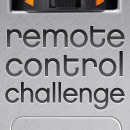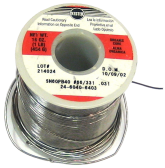This article begins detail description of DefendLineII project and aims to simplify its assembling, setting up and further development by wide range of embedded controller designers and enthusiasts. First of all, traditional question, what is the purpose of designing a new hardware platform when there are a lot of things to choose from like Arduino, for instance? Well, to begin with, Arduino boards are designed as set of generic solutions for literally everything and most of the readers would probably agree that a generic way is definitely not the best one. To say more, the main page of Arduino site describes the product as ‘electronics prototyping platform… intended for artists, designers, hobbysts, and anyone interested in creating interactive objects or environments’, in other words, Arduino offers platform for rapid prototyping by virtually anyone, either with or without electronics and programming background.
In contrary, DefendLineII has pretty much definitive application field – objects control and automation in remote areas and which, in its own turn, automatically imposes certain requirements such as fault tolerance and reliability. Ability to work in remote and desolated areas means that the system must be fully functional in wide temperature range, must perform regardless of power instability or even outages, must be as power efficient as it is possible, must have embedded set of diagnostic tools for automated self checks and means to warn server side of when and what goes wrong, must have a feature to recover in case of unexpected external or internal events and must keep the ability to perform its primary task which in most cases is collecting, processing and sending data provided by sensors of any kind. DefendLineII was designed with these features in mind.
Secondly, Arduino boards allow connections with different extension boards called shields and this makes possible to get a desirable configuration capable of doing something specific. But again, designed to be generic, Arduino boards along with installed shields represent rather bulky assembly and the total cost of it is relatively high. In comparison, the main unit of DefendLineII was designed to be as compact as possible yet ergonomic enough and featuring SMD components soldered on both sides. Hardware facilities allowing the main unit interacting in a unified way with the outer world were deliberately separated from main board to have possibility to interchange transport layers so in order to make the system Ethernet/GSM/ZigBee compatible an appropriate transport module should be connected reducing overall costs and dimensions. In addition, some components which are not required for some particular solutions could be not soldered which is an extra point to minimize system’s cost.
As Arduino boards are intended for anyone it forced the designers to simply many things to make them easier to understand or use. It automatically creates some limitations hardly noticeable in case of generic basic projects. Indeed, DefendLineII is designed for people who have good soldering skills, some experience in embedded programming, not just programming and for people who are not afraid to spend a little bit more effort than in case of Arduino based projects to achieve outstanding results. And we are here to help you in this endeavor.
Next article: DefendLineII. Circuit Diagram;
Thank you for your attention and all the best,
Magictale team















Leave a Reply
You must be logged in to post a comment.